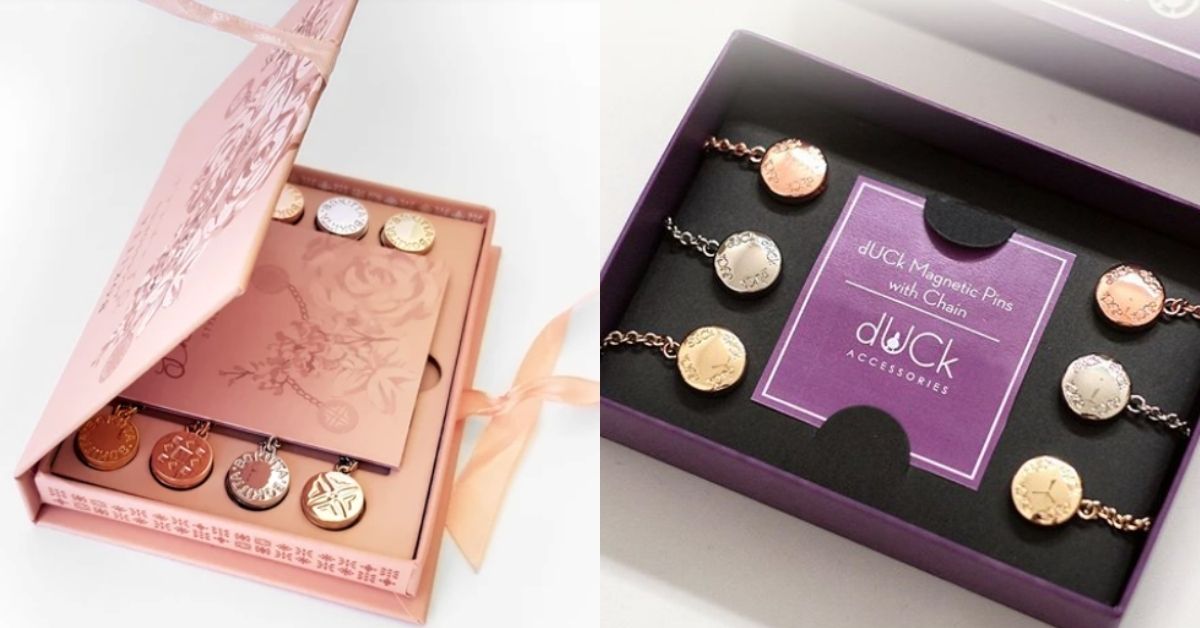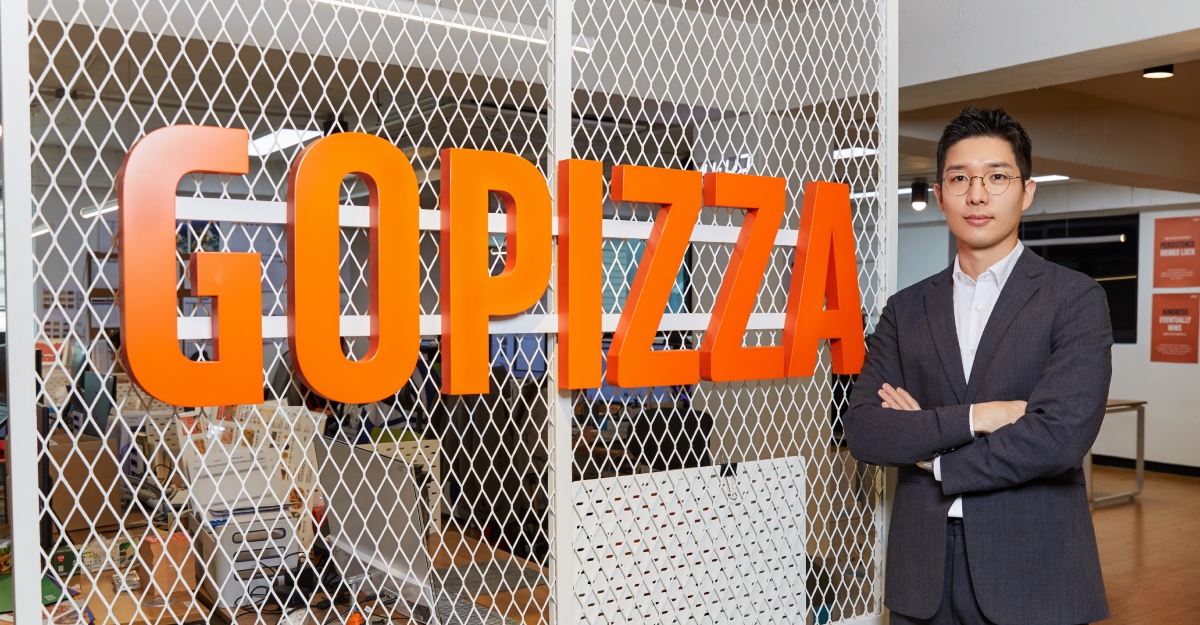The fashion, design and lifestyle industries create a huge number of new and original designs every season.
However, it seems that little use is made of national and regional laws to register and protect these designs, according to BMCC.
The site infers that this is mainly because of an impression that the short life-cycle of such products may not justify the financial cost involved in legally registering them.
Recently, Vivy Yusof of dUCk Scarves has been accused of allegedly plagiarising another hijab label, Bokitta.
This was what sparked our curiosity in where the line between inspiration and plagiarism was drawn, and what laws we have in Malaysia to protect designers from the latter.
Plagiarism Or Inspiration?
A dispute broke out between fans of the two brands after dUCk uploaded its Magnetic Pins with Chains, their latest product, on its official Instagram page.
Bokitta fans were quick to accuse that the hijab accessory had already been around since last year, while dUCk’s product was launched just a few days ago on October 20.
This isn’t the first time that dUck has been accused of allegedly copying another designer’s artwork.
In April 2019, Malaysian brand Ilham Echenta accused the company of allegedly copying its range of instant turban designs.

Although they do bear many similarities, it’s hard to justify and prove whether dUCk plagiarised Ilham Echenta’s design as accused.
Christy Ng has also faced similar accusations after releasing the design of her bag which looked rather similar to Bottega Vaneta’s “The Pouch”.

Here’s where the problem lies.
Both designers mentioned above are using these “copied designs” for commercial purposes by selling them and allegedly passing it off as their own.
According to Steven Bradley on Vanseo Design who worte, “While it’s ok to copy to learn, it’s not acceptable to copy someone’s work and pass it off as your own for commercial purposes.”
He further stated that we can all agree that it’s wrong and that’s why intellectual property (IP) rights exist in the first place.
Do Fashion Designs Have IP Protection?
IP protection in Malaysia comprises patents, trade marks, industrial designs, copyright, geographical indications and layout designs of integrated circuits.
In Malaysia, the IP rights that protect fashion designs fall under the industrial designs.
An industrial design refers to the features of shape, configuration, pattern, or ornament applied to an article by any industrial process which in the finished article appeal to the eye and are judged by the eyes.
Simply put, it refers to the features of a finished piece of design that can be seen and judged by a person.
Industrial designs law is governed by the Industrial Designs Act 1996 and Industrial Designs Regulations 1999 in Malaysia.
Legal enforcement will take place if you didn’t get permission from the owner of a registered design and still go ahead with using or applying those imitations in an obvious or fraudulent way for commercial use.
Infringement happens when a person accused of using the same design without a licence or consent from the owner of a registered design applies the design or any obvious or fraudulent imitation thereof to any article in respect of which the design is registered; or imports, sells, hires or offers or keeps for sale or hire any such article.
World Trade Market Review
“Obvious” means that it is immediately apparent to the eye that the offending design is an imitation.
While “fraudulent imitation” means that the offending design is not necessarily an obvious copy of the registered design, but contains some differences to disguise the copying.
dUCk’s magnetic hijab pins would allegedly fall under “obvious” for its similarities to Bokitta’s.
For Christy’s case, she would most likely be accused of “fraudulent imitation” as her version of the bag adds on a strap that the other lacks.
Vivy’s instant turban case might also fall under this, as there are some significant differences.
However, the alleged “original designers” (owners) are only able to sue the accused with these claims if—and only if—the owners had registered industrial design rights for their products.
This is because Malaysian law does not provide protection for an unregistered design.
Therefore, it is particularly important to register designs in Malaysia wherever possible.
The new term of protection of 25 years should make design registration a more attractive option.
How Do You Apply For Protection?
An application for registration includes:
- The completed application form;
- A legal representative;
- A statement explaining briefly the applicant’s source of title from the author;
- One set of representations of the design; and
- Payment of the official fees.
The representations consist of drawings or photographs showing several angles of the design applied to the piece.
There is no prescribed minimum number of angles, but it should be sufficient to show the whole design, particularly its novel features.
A designer should budget around RM1,000 for submitting an application for a single design. This fee is assuming no objections will be raised in prosecution.
For multiple applications, each additional design after the first one may add around another RM500 to RM600 to the overall costs.
Upon registration, no further official fees are required until the first renewal, which will be due 5 years later.
This registration can be extended up to 4 times, where the maximum protection period is 25 years.
Getting A Fashion Lawyer Is A Good Idea
Art is subjective, and in the world of fashion, lawyers should be well versed to defend their clients.
Affendy Ali, a Malaysian lawyer specialising in fashion law said in an interview with The Star:
“Ideally, every designer should have a legal person that looks out for him or her. The contracts signed governing the relationship with a third party should effectively work to help protect the rights of the designer.”
He goes on to explain that consulting a lawyer would be helpful when pitching for funding too.
“An investment agreement is not a simple two-page agreement. When it comes to intellectual property rights, on the other hand, the law can work in protecting a brand’s trademark,” he said.
Malaysian fashion designer Fairuz Ramdan, said in the same article by The Star that it’s always a good idea to hire a lawyer with experience working in the fashion industry.
“If not, try finding one that has a business background. What matters most is that the person can get things done,” he shared.
“After all, friends can become enemies. In business, even where fashion is concerned, it all comes down to the money.”
What designers in Malaysia should know is that the business of fashion is not only about creating a fashion label and creating designs. It is a business at the end of the day where the fashion label is required to make sound business decisions. This is where the legal aspects come into play.
Affendy Ali, Malaysian lawyer for fashion law
- You can read more about other fashion related articles here.
Featured Image Credit: Bokitta / dUCk









